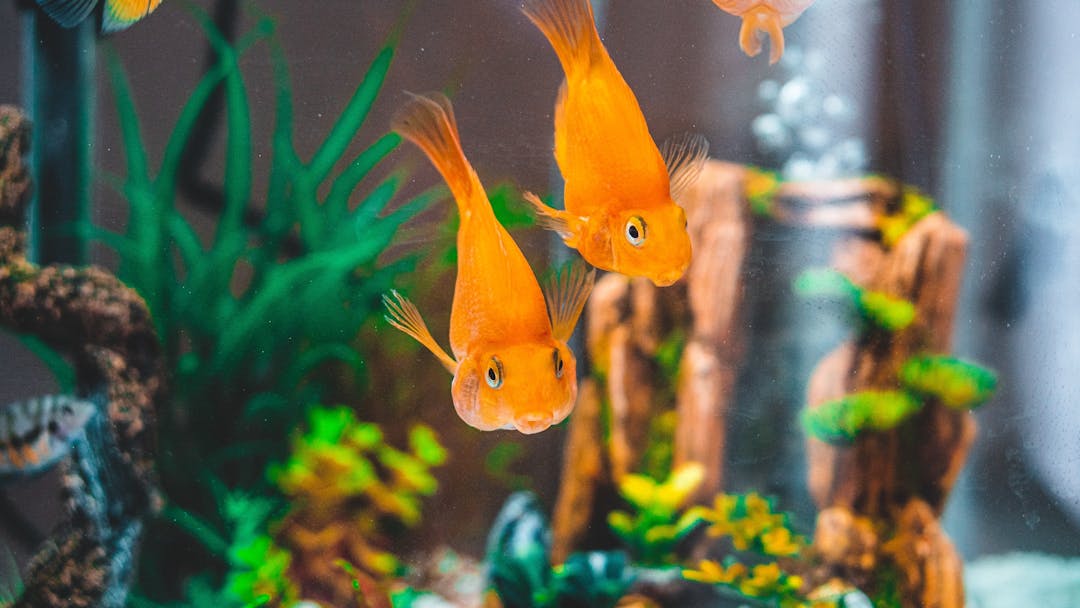Finally getting around to getting pet fish? What an exciting project! Before you run off to the pet store, there are a few things you need to know first. Having a solid plan for your tank size, types of fish and fish compatibility can make or break the success of your tank—and the lives of your new fin babies.We’re here to help you understand what you need to know so you can have healthy, happy fish. Keep reading to find out how you can avoid fish tank pitfalls.
Fish Tank Size
The first thing you need to consider when starting out is fish tank size. Have you thought about the best place in your home to keep your fish tank? Time to take out the measuring tape. Once you’ve picked out a safe spot in your home, then you can start thinking about the tank itself. For a fish, going from their natural habitat to living in a tank is a dramatic change.
Fish need space to swim freely. When fish feel crowded, they tend to get agitated or aggressive. The more space they have, the better they’ll get along. In general, the rule for fish tank size is 1 inch (of fish) per gallon. This is just a starting point though—territorial fish will need even more space. Here are a few things to keep in mind when selecting a tank:
- A 20-gallon glass tank doesn’t necessarily hold 20 gallons of water when you factor in internal dimensions, gravel, rocks, and decorations.
- Your fish will probably grow! Be mindful of the 1-inch rule and be prepared to move some fish to a separate tank.
- Dimensions matter. Some active fish, like danios and barbs, prefer wider swimming spaces. Other less active fish, like discus, angelfish, and gouramis, are better suited for tall, narrow aquariums. Though nice to look at, narrow tanks don’t provide as much swimming space or territory as a wider tank.
Choosing Your Fish
It’s easy to get taken in by the beauty of all the colorful fish in the pet store. It’s almost overwhelming! It’s not a good idea to choose fish based on your favorite colors though.
Make sure your new fish:
- Tolerate a variety of water conditions, especially in a new tank
- Are friendly
- Do not grow to be too big
- Are similar in size and age to the other fish
- Can eat a variety of foods
- Are compatible with a variety of other fish
You could also create a single-species tank. Here are a few species that make great “first fish”:
- Rasboras: Harlequins and scissortails
- Barbs: Cherry, gold, rosy, ruby, purple, and tico
- White Cloud Mountain Minnows
- Danios: Zebra, leopard, and pearl
- Catfish (some varieties): Bronze or gold corys, spotted cory, bandit cory, and panda cory
- Rainbowfish: Boesmans, celebes, and neon
This list might look long, but you should start off with only two or three fish initially, then slowly add more once the nitrogen cycle has been established. The nitrogen cycle is the process of establishing beneficial bacterial colonies in the tank. Understanding this process is key to setting up a new environment for your fish to thrive in.
Here are some “first fish” to avoid:
- Tinfoil, plecos, giant danios, and spanner barbs due to size
- Tiger barbs due to aggression
- Otocinclus catfish due to high sensitivity to toxins in a newly started tank
- Goldfish due to copious amounts of waste—if you have your heart set on a goldfish, be sure to get a large tank
- Halfbeaks, leaf fish, needlefish, bichirs, certain gobies, arowanas, stingrays, and gar due to predatory behavior
- Live bearing fish due to their need for special water conditions (salinity) and because they’re more susceptible to disease
Some pet shops might even take back or exchange a fish if they get too big, so be sure to check with a manager before purchasing.
When selecting fish, regardless of species, look for healthy individuals and avoid fish that have:
- Wounded or damaged fins — they are likely to be more susceptible to disease
- Cloudy eyes — this could indicate poor water conditions or disease
- Sunken bellies — they might be chronically underfed or may have a disease
Fish Compatibility
Whether you’re going for a single-species tank or a mix, be sure to introduce new fish in moderation. And be careful with the sex of the fish to avoid breeding—ask the pet store employee for help. Don’t put more than one male of the same species in the same tank or they might become aggressive and territorial.
When selecting fish, do your homework. Choose whichever fish you like from the “first fish” section and double-check with the pet store employee to make sure that they’re compatible in terms of:
- Food types
- Water conditions
- Personalities
While you’re shopping, be sure to pick up some rocks, caves, plants, driftwood, and other decorations. These will help make the tank look great and give the fish a chance to define their personal areas. They’ll make your tank feel more like home. If you have any questions about how to care for your fish, don’t hesitate to contact a vet on Airvet.
We can help treat a variety of animals, including those that have fins and scales. Keep in mind that these are general guidelines. Fish do have individual personalities, so we can’t guarantee that certain fish will get along. So, expect the unexpected.





